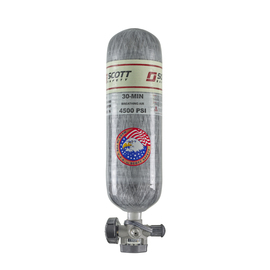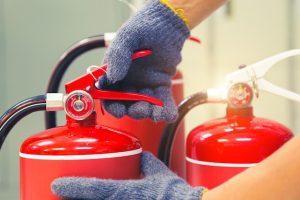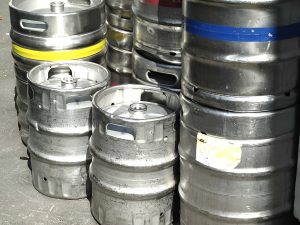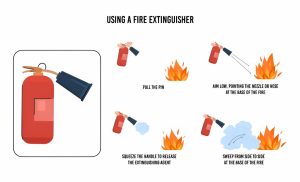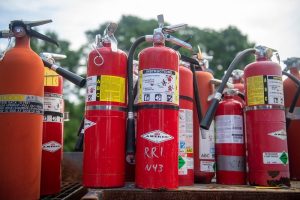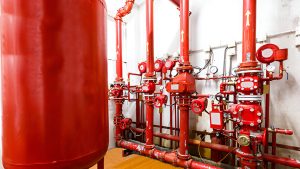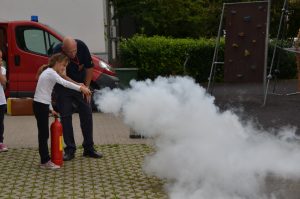SCBA Hydrostatic Testing
At Serviced Fire Equipment, we understand the critical importance of safety in firefighting and rescue operations. One of the most vital pieces of equipment for firefighters is the Self-Contained Breathing Apparatus (SCBA), which allows them to breathe safely in hazardous environments. Ensuring the reliability and safety of SCBA cylinders is paramount, and that’s where hydrostatic testing comes in. In this blog post, we will delve into the significance of SCBA hydrostatic testing, with a focus on the water jacket testing method that we employ.
Understanding SCBA and Hydrostatic Testing
An SCBA consists of a high-pressure air cylinder, a pressure regulator, and an inhalation connection (mouthpiece, mouth mask, or face mask). These cylinders are typically made of steel, aluminum, or composite materials and are designed to withstand high pressures. Over time, however, the integrity of these cylinders can degrade due to factors such as wear and tear, exposure to extreme temperatures, and repeated pressurization cycles.
Hydrostatic testing is a non-destructive method used to verify the structural integrity and safety of high-pressure cylinders. This testing method involves filling the cylinder with water, pressurizing it to a level significantly higher than its normal operating pressure, and measuring the cylinder’s expansion. The water jacket method is one of the most reliable and commonly used techniques for this purpose.
The Water Jacket Testing Method
The water jacket method involves placing the SCBA cylinder in a test chamber filled with water. Here’s a step-by-step overview of the process:
-
Preparation:
- The cylinder is first visually inspected for any obvious signs of damage, such as dents, corrosion, or cracks. If the cylinder passes this initial inspection, it is then emptied and filled with water.
-
Immersion:
- The water-filled cylinder is immersed in a water jacket, a sealed chamber filled with water. The water jacket is connected to a gauge that measures the water displacement caused by the cylinder’s expansion.
-
Pressurization:
- The cylinder is then pressurized to a level higher than its service pressure (usually 1.5 times its working pressure). This high pressure causes the cylinder to expand slightly.
-
Measurement:
- The expansion of the cylinder displaces water in the jacket, and this displacement is measured by the gauge. The amount of expansion is recorded and compared to the cylinder’s allowable limits.
-
Analysis:
- If the expansion is within acceptable limits and the cylinder returns to its original dimensions after the pressure is released, the cylinder passes the test. If the expansion exceeds the allowable limits or the cylinder does not return to its original size, it fails the test and must be taken out of service.
Why Hydrostatic Testing is Crucial
1. Safety Assurance:
The primary purpose of SCBA hydrostatic testing is to ensure the safety of the SCBA cylinders. Firefighters rely on these cylinders to provide breathable air in life-threatening situations. A cylinder failure during use could lead to catastrophic consequences. Regular hydrostatic testing ensures that only safe, reliable cylinders are used in the field.
2. Compliance with Regulations:
Regulatory bodies such as the National Fire Protection Association (NFPA) and the Department of Transportation (DOT) mandate regular hydrostatic testing of SCBA cylinders. Compliance with these regulations is not only a legal requirement but also a best practice to ensure the highest standards of safety.
3. Extending Cylinder Lifespan:
Regular testing and maintenance can significantly extend the lifespan of SCBA cylinders. By identifying and removing damaged or compromised cylinders from service, hydrostatic testing helps prevent potential failures and prolongs the usable life of the equipment.
4. Cost-Effectiveness:
While hydrostatic testing incurs some cost, it is far more economical than replacing entire sets of SCBA equipment. Early detection of potential issues through testing can save organizations money in the long run by avoiding costly emergencies and equipment replacements.
Frequency of Hydrostatic Testing
The frequency of hydrostatic testing depends on the material of the SCBA cylinder:
- Steel and Aluminum Cylinders: These cylinders typically require hydrostatic testing every five years.
- Composite Cylinders: These are usually tested every three years, though some may have a five-year testing interval depending on the manufacturer’s specifications.
It’s important to adhere to these testing intervals to maintain compliance with safety regulations and ensure the reliability of the SCBA equipment.
Why Choose the Water Jacket Method?
The water jacket method is preferred for several reasons:
1. Accuracy:
The method provides highly accurate measurements of cylinder expansion, ensuring reliable results.
2. Safety:
By using water as the medium, the risk of explosive failure is minimized. If a cylinder does fail, the water absorbs the energy, preventing a dangerous rupture.
3. Non-Destructive:
The water jacket method is non-destructive, meaning the cylinder can continue to be used if it passes the test. This is in contrast to some other testing methods that can damage the cylinder.
4. Industry Standard:
The water jacket method is widely recognized and accepted as the industry standard for hydrostatic testing of high-pressure cylinders.
Our Commitment to Safety and Quality
At Serviced Fire Equipment, we are committed to providing top-notch SCBA hydrostatic testing services using the water jacket method. Our experienced technicians follow strict protocols to ensure every cylinder is thoroughly tested and safe for use. Here’s what sets us apart:
1. Expertise:
Our team consists of certified professionals with extensive experience in SCBA maintenance and testing. We stay updated with the latest industry standards and regulations to ensure compliance and safety.
2. State-of-the-Art Equipment:
We use advanced testing equipment to perform hydrostatic tests with precision and accuracy. Our water jacket testing chambers are regularly calibrated to maintain optimal performance.
3. Comprehensive Service:
In addition to hydrostatic testing, we offer a range of services, including visual inspections, cleaning, and maintenance of SCBA equipment. Our goal is to be your one-stop solution for all fire equipment needs.
4. Customer Satisfaction:
We prioritize customer satisfaction and work closely with our clients to meet their specific needs. Our transparent processes and detailed reports provide peace of mind, knowing that their SCBA cylinders are in safe hands.
Conclusion
SCBA hydrostatic testing is a critical component of fire safety, ensuring that the equipment firefighters rely on is both safe and effective. The water jacket testing method, with its accuracy and reliability, stands out as the preferred choice for testing high-pressure cylinders. At Serviced Fire Equipment, we are dedicated to providing exceptional hydrostatic testing services to keep your SCBA equipment in top condition. Regular testing not only ensures compliance with safety regulations but also protects the lives of those who risk their own to save others. Trust us to keep your equipment safe, reliable, and ready for action.
For more information about our services and to schedule your SCBA hydrostatic testing, visit our website or contact us today. Your safety is our priority.

